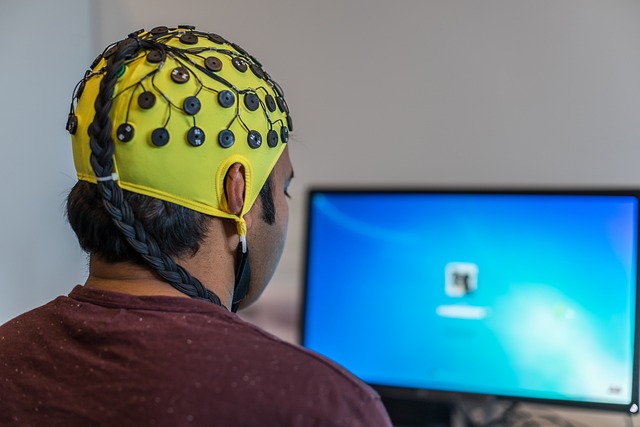In an era where digital interactions have become an integral part of daily life, the intersection of technology etiquette and social trends is reshaping the way we approach cybersecurity. One emerging concept that captures this shift is mixed‑type threat detection, a holistic approach that blends traditional technical defenses with behavioral insights to guard against a broader spectrum of threats. This article explores how evolving social habits influence both the risks we face and the etiquette that governs our digital conduct, while highlighting practical strategies for implementing mixed‑type threat detection.
Technology Etiquette in the Age of Mixed‑Type Threats
Technology etiquette is more than a set of polite guidelines; it is a framework that influences trust, collaboration, and security. As more people work from home, attend virtual events, or rely on mobile devices for sensitive tasks, the lines between professional and personal boundaries blur. Proper etiquette—such as turning off cameras during confidential meetings, securing shared drives, or using strong authentication—acts as a first line of defense. When users adhere to these norms, they reduce the attack surface that would otherwise be exploited by mixed‑type threats that combine phishing, credential theft, and social engineering.
- Respect Privacy Boundaries – Avoid oversharing personal data in public channels.
- Secure Communications – Use encrypted messaging and video platforms.
- Confirm Identities – Verify colleagues before sharing confidential files.
Social Trends Shaping the Cyber Threat Landscape
Several social trends are redefining the nature of threats. The rapid adoption of remote work, the rise of the gig economy, and the proliferation of social media all contribute to a dynamic threat environment where attackers adapt quickly to human behavior.
“The real vector of cyber attacks today is the human element—every new platform is a new opportunity for social manipulation.” – Cybersecurity Analyst
These trends are not just risk factors; they also create opportunities for defenders. By understanding how people interact online, security teams can design mixed‑type threat detection systems that identify anomalies not just in code, but in context.
Remote Work and Virtual Etiquette
The shift to distributed teams has amplified the need for clear virtual etiquette. Without in‑person oversight, employees might unknowingly expose themselves to threats through misconfigured VPNs, insecure personal devices, or weak password practices. Mixed‑type threat detection addresses these vulnerabilities by continuously monitoring device compliance, network traffic patterns, and user behavior.
- Device Hardening – Enforce OS updates and security patches.
- Network Segmentation – Separate work traffic from personal data streams.
- Multi‑Factor Authentication – Make credential theft a low‑impact event.
Mixed‑Type Threat Detection Strategies
Unlike traditional detection systems that focus solely on malware signatures or known vulnerabilities, mixed‑type threat detection incorporates both technical and behavioral layers. This dual approach allows organizations to detect sophisticated campaigns that use a blend of phishing, credential reuse, and insider collusion.
- Behavioral Analytics – Leverage machine learning to model normal user activity and flag deviations.
- Threat Intelligence Feeds – Correlate external indicators of compromise with internal logs.
- Security Orchestration – Automate incident response workflows that consider human context.
Behavioral Analytics
At the core of mixed‑type detection is the ability to interpret human behavior. Patterns such as an employee logging in from an unfamiliar location, accessing an unusually large file set, or sending messages to new contacts can be early warning signs of a compromised account. By normalizing these patterns across the organization, security teams can reduce false positives and focus on genuine threats.
“Behavioral analytics are the new heartbeat of security. They transform raw data into actionable insight.” – Lead Data Scientist
The Human Factor
Security is only as strong as the people who use it. Mixed‑type threat detection acknowledges that attackers exploit not only technology but also human tendencies such as curiosity, impatience, and social pressure. Training programs that emphasize technology etiquette—how to spot phishing emails, how to verify new contacts, how to handle sensitive information—are essential. When employees understand their role in the security ecosystem, they become an active layer of defense.
- Simulated Phishing Campaigns – Test user awareness in a controlled environment.
- Clear Reporting Channels – Encourage quick escalation of suspicious incidents.
- Feedback Loops – Share lessons learned to reinforce best practices.
Ethical Considerations and Privacy
Mixed‑type threat detection relies heavily on data collection, which raises legitimate concerns about privacy and data sovereignty. Organizations must balance security needs with the rights of employees and customers. Transparent policies, data minimization, and strict access controls are crucial to maintaining trust while protecting against threats.
- Consent and Transparency – Communicate what data is collected and why.
- Data Retention Limits – Store behavioral data only as long as necessary.
- Independent Audits – Validate that detection systems comply with privacy standards.
Looking Ahead: Future Trends in Technology Etiquette
As artificial intelligence becomes more integrated into daily tools—chatbots, virtual assistants, and autonomous systems—technology etiquette will evolve to include guidelines for interacting with non‑human agents. Ethical use of AI, responsible data sharing, and respectful digital presence will shape the next generation of security policies. Mixed‑type threat detection will continue to adapt, incorporating AI‑driven behavioral models that can anticipate emerging attack vectors.
In summary, the convergence of technology etiquette and social trends necessitates a new security paradigm. By embedding mixed‑type threat detection into organizational culture, companies can safeguard against the multifaceted threats of the digital age while fostering a respectful, secure, and productive environment.




